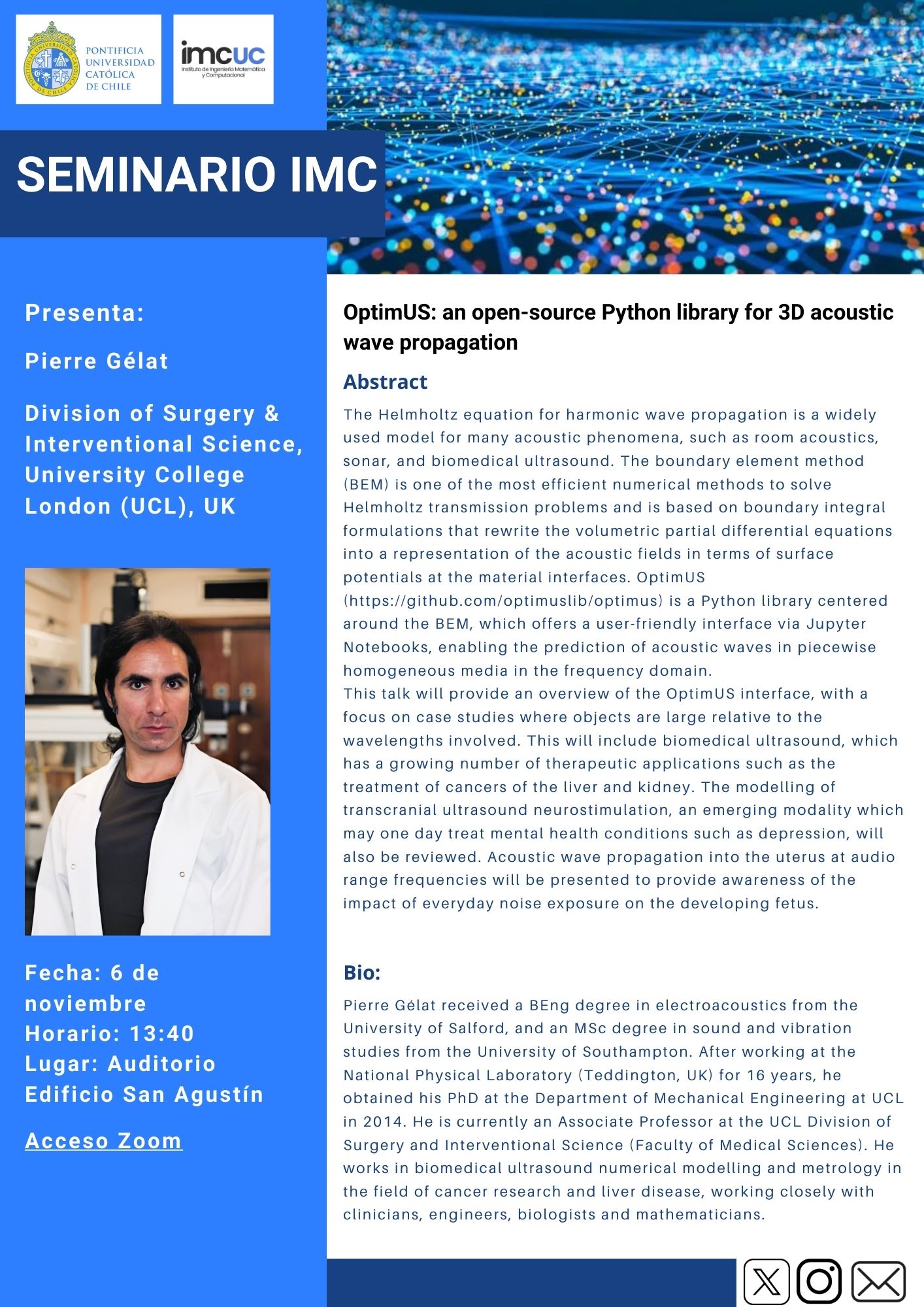El Instituto de Ingeniería Matemática y Computacional (IMC) invita al seminario que se dictará la próxima semana.
Pierre Gélat, Division of Surgery & Interventional Science, University College London (UCL), UK.
Miércoles 6 de noviembre de 2024, 13:40 hrs. (Presencial en auditorio Edificio San Agustín; link Zoom disponible escribiendo a Esta dirección de correo electrónico está siendo protegida contra los robots de spam. Necesita tener JavaScript habilitado para poder verlo.)
ABSTRACT
The Helmholtz equation for harmonic wave propagation is a widely used model for many acoustic phenomena, such as room acoustics, sonar, and biomedical ultrasound. The boundary element method (BEM) is one of the most efficient numerical methods to solve Helmholtz transmission problems and is based on boundary integral formulations that rewrite the volumetric partial differential equations into a representation of the acoustic fields in terms of surface potentials at the material interfaces. OptimUS (https://github.com/optimuslib/optimus) is a Python library centered around the BEM, which offers a user-friendly interface via Jupyter Notebooks, enabling the prediction of acoustic waves in piecewise homogeneous media in the frequency domain.
This talk will provide an overview of the OptimUS interface, with a focus on case studies where objects are large relative to the wavelengths involved. This will include biomedical ultrasound, which has a growing number of therapeutic applications such as the treatment of cancers of the liver and kidney. The modelling of transcranial ultrasound neurostimulation, an emerging modality which may one day treat mental health conditions such as depression, will also be reviewed. Acoustic wave propagation into the uterus at audio range frequencies will be presented to provide awareness of the impact of everyday noise exposure on the developing fetus.

